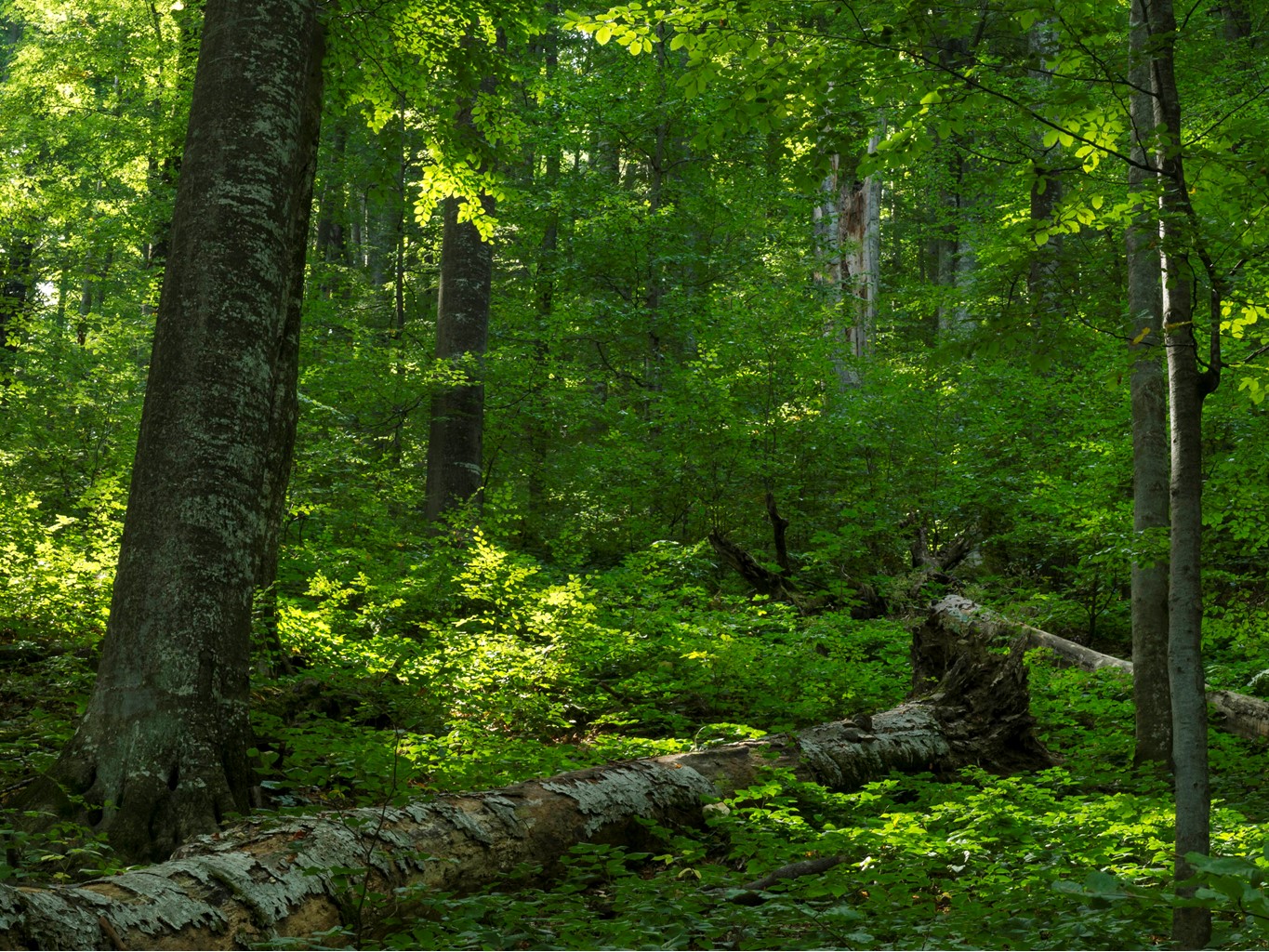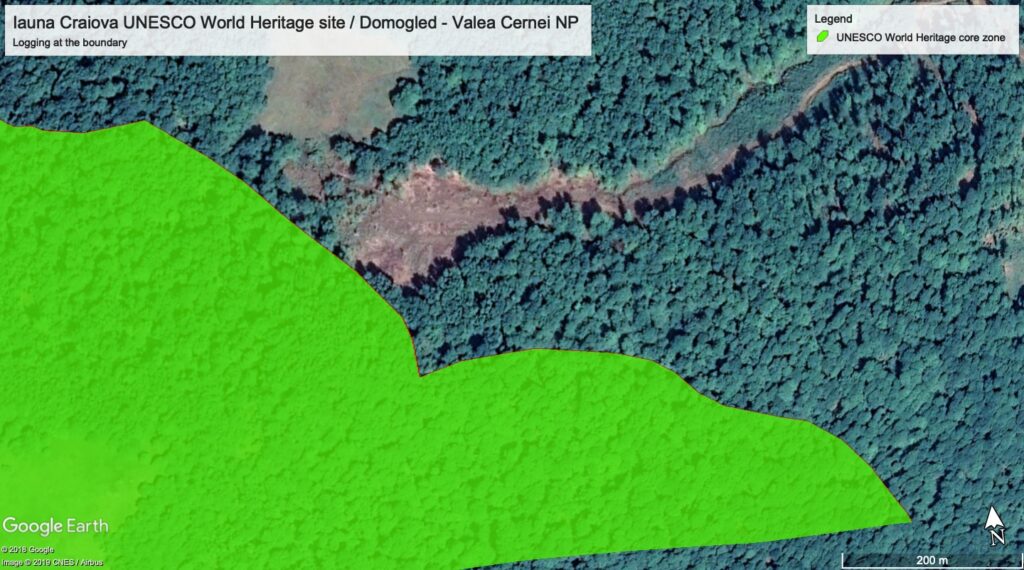++ UNESCO and IUCN representatives in the forest of the Carpathians ++ Forest conservationists have already referred to clear cuts in UNESCO buffer zones and national parks ++ Tactics of concealment by the state forestry company Romsilva prevented ++
A delegation of representatives of UNESCO and IUCN visited the paradise forests in the Romanian Carpathians. The reason was a so-called “reactive mission”, which serves to report on the conditions of the UNESCO World Heritage sites. At least at the meeting on 18.11.2019 in the Baile Herculane forest in Domogled – Valea Cernei national park, two activists of Agent Green were present. From the Romanian side, among others, the
head of Romsilva, Mihailescu, as well as numerous foresters and two delegates of the Ministry of Environment were present at the meetings.
The four main topics of discussion on Monday were the construction of the national road DN66A, the forest areas in the UNESCO World Heritage buffer zones as well as pasture management in these and planned hydropower plants in Romania.
EuroNatur and Agent Green were not invited for an excursion to the forests. Probably, so that Romsilva could only show intact forests to the representatives of the international institutions to underline their lies that in Romania’s forests everything is in order. To prevent this, however, EuroNatur and Agent Green had previously sent a letter to the delegation informing them with background information and information on nearby clear cuts, so that they could demand a visit to these areas as well. Thus, the representatives could also see the fatal reality in Romania’s forests. They visited, for example, the clear cuts in the Craiova valley and the Oplesata mountain peak, which border the UNESCO core zones. The delegates also visited the Arjana and Dobraia areas, where they could vitness the consequences of the recent forest fires in the Domogled national park. The days before, they had visited the area in Ciucevele Cernei, where in July 2019 EuroNatur and Agent Green protested together with Robin Wood against the construction of the national road DN66A. The construction of the road would cause massive destruction of valuable forests. The UNESCO and IUCN delegation also reiterated the need for a comprehensive environmental impact assessment of the impact on forests in these areas before construction continues.
In the discussion, Agent Green activists were able to highlight the numerous other deforestations in UNESCO World Heritage buffer zones as well as the lack of implementation of the IUCN criteria for at least 75% core zones in national parks. Already in July, Romania was criticised by the UNESCO World Heritage Committee for the handling of its parts of the World Heritage sites. EuroNatur executive director Gabriel Schwaderer already expressed his concerns about the World Heritage Site at that time: “We have to fear that this extraordinary World Heritage site will soon be classified as ‘endangered’ – and this would include the German parts. The management of the Romanian areas has not improved in recent years, and now there’s a pressing need to take remedial action. The World Heritage Committee is already entering escalation level 1 by announcing to carry out a re-assessment of the World Heritage areas. We hope that this pressure will finally make the Romanian government rethink. Romania is hosting an ancient forest treasure that has long been lost almost everywhere else in Europe”.
All in all, the visit showed that both UNESCO and IUCN are keeping an eye on what is happening in Romania’s forests. Representatives of both institutions urge both a more comprehensive assessment of the impact of infrastructure projects on forests and a better management of this natural resource. They call on Romania to step up its protection efforts. A detailed report by the delegation, which will hopefully contain these points with clear statements, will follow shortly.






